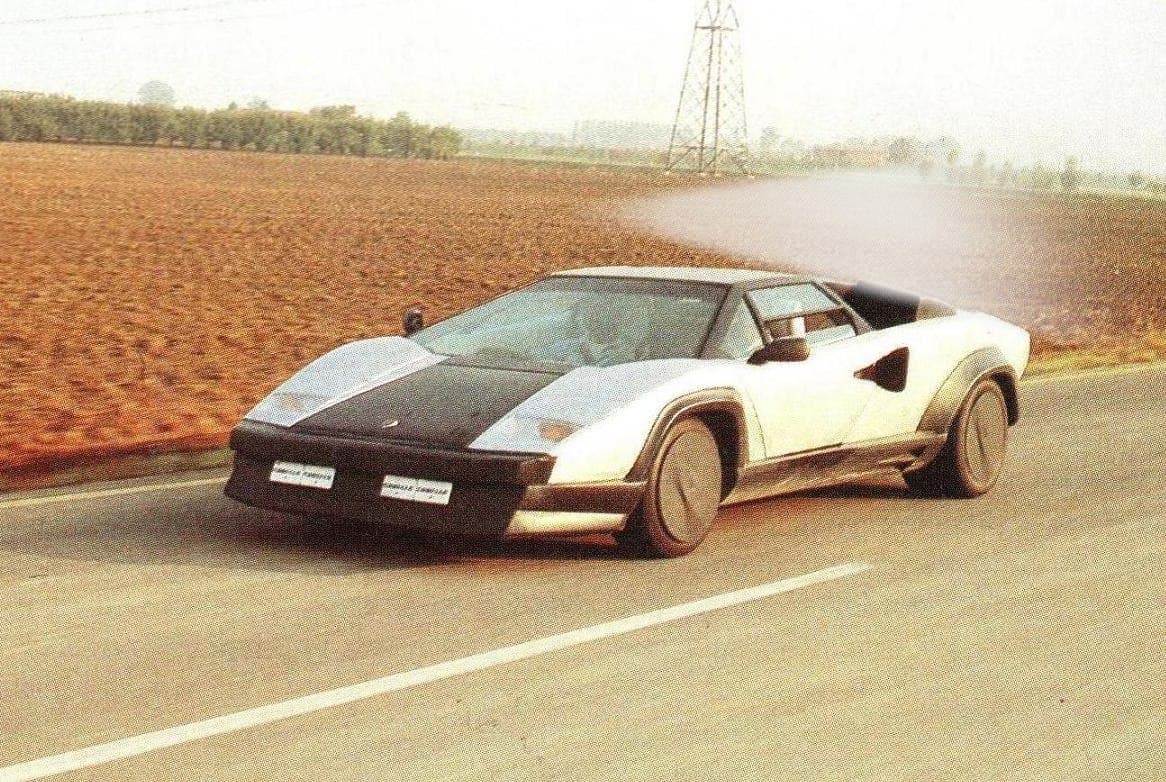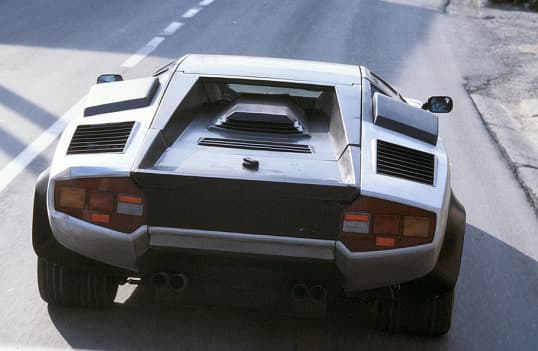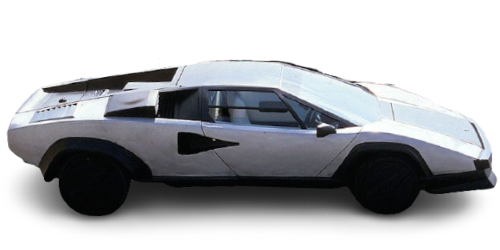This is probably the strangest looking Countach ever, it looks as if it left the factory before it got painted or upholstered, this is the Evoluzione, a mobile test-bed for new ideas.
The Evoluzione was designed and built in 1987 under the direction of Horacio Pagani, by the newly-formed ‘Composites Department’, they decided to change the steel space-frame of the original Countach to a chassis/body construction in composite materials.
The cockpit, including the floor and roof panels, the central transmission tunnel, the door sills and the front and rear bulkheads were all made in one piece of composite materials. A honeycomb and aluminum foil sandwich material, Kevlar and carbon fiber bonded together under partial vacuum at 140 degrees Celsius.
Various body parts were also changed to composite ones, the front lid, the engine cover and boot lid, the front spoiler, which used a simpler design and was a little lower than the original Countach and the wheelarches, which were now connected through sills with air-cooling vents for the rear brakes. These sills would later be used on the Anniversario in a slightly altered design, the wings and the doors remained in aluminum Thanks to the extensive use of light-weight composites, the total weight of the Evoluzione was only 980 Kg, or about 500 Kg less than the Countach QV5000S, this and a minor tuning of the engine, now with 490 Bhp, made the Evoluzione reach a top speed of 330 Km/h. at the Nardo test track. This engine was ‘blue-printed’ and still used the same transmission, but with a modified gate to allow a shorter ‘throw’ between the gears.
The car was never painted and the riveting of the body parts remained visible when you opened the door, even the carbon fiber and Kevlar kept their natural gloss under their thin layer of glue to keep them in shape. On the inside the same rough appearance was evident, only two seats and a small carbon-fiber dashboard were used, with a tachometer, water temperature, fuel level and oil pressure gauges. A few pieces of carpet were used to mask the many colored wires which used to be connected to various test and recording equipments, no air-conditioning, no headlights, no horn and not even a wiper were installed.
The wheels remained, but got carbon-fiber disc covers, these didn’t allow enough cooling for the brakes and were later removed. Various new ideas were installed on the Evoluzione before it was crash tested; an electronically controlled damping system with variable ride height, an ABS braking system and a four-wheel drive with variable torque split were installed. Even a fully retractable wiper system was installed on it, various parts and even some of these latter designs were later used on the Anniversario and the Diablo VT.
But production of a composite based Countach was too expensive, and in case of an accident the complete shell would have to be replaced because repairing a composite body/chassis is very hard if not impossible, therefore the Evoluzione performed a last test: the crash barrier test, which revealed valuable information on the impact resistance of this kind of chassis structure.
















